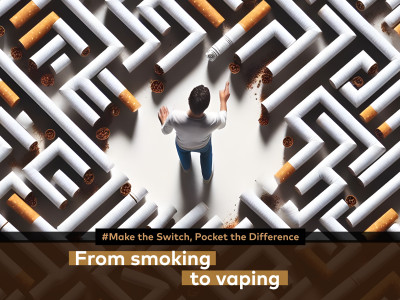The ACS, it says, “does not conduct research, but publishes and publicises peer-reviewed scientific studies.” This one, they state, “has found that toxins in e-cig vapour can exceed set limits.”
Given that the major funder is the University of California’s Tobacco-Related Disease Research Program is enough to start bells ringing. The inclusion of Stanton Glantz’ colleague Neal Benowitz on the team makes those bells ring louder.
The lies begin in the introduction: “misleading marketing often portrays these products as generating nontoxic emissions that can safely be used indoors.”
The team took already discredited data regarding the production of toxins and then took an absolute guess at how much of that would escape from a users mouth into a room as second-hand (and third-hand) vape. They didn’t take measurements from the air in a room, they didn’t take swabs from the surfaces of objects in a room, and they didn’t measure vape coming from the mouth of a user. They used a “matrix of puffing regimes”, which means they made it all up.
The team does deserve a prize for keeping CE4 atomiser manufacturers in business, given that few other people ever buy them. As well as using these top of the range pieces of kit, the team also obtained their results from Kangertech Aerotank Minis. These were then fed either 3.8 volts or 4.8 volts and “puffed” like nobody’s business: “250 puffs per day, distributed in (A) 25 sessions of 10 puffs each; (B) 10 sessions of 25 puffs each, and (C) 5 sessions of 50 puffs each.”
They produced figures for formaldehyde, acetaldehyde, acrolein and diacetyl from dry burning wicks. They guessed at what the levels of chemicals in the air would be like in the home, they guessed at what the levels might be in a bar or workplace. They produced pretty charts with error bars, ignored all previous criticism of such methodology and pretended this constituted real science.
Amazingly, they found: “For formaldehyde, acrolein and diacetyl, the daily doses predicted for a relatively high usage rate of 250 puffs day were comparable to or exceeded those derived from occupational health guidelines.”
Which is precisely the kind of nonsense they wanted to find.
Photo Credit:
Results table borrowed from the Environmental Science & Technology journal.
Dave Cross
Journalist at POTVDave is a freelance writer; with articles on music, motorbikes, football, pop-science, vaping and tobacco harm reduction in Sounds, Melody Maker, UBG, AWoL, Bike, When Saturday Comes, Vape News Magazine, and syndicated across the Johnston Press group. He was published in an anthology of “Greatest Football Writing”, but still believes this was a mistake. Dave contributes sketches to comedy shows and used to co-host a radio sketch show. He’s worked with numerous vape companies to develop content for their websites.
Join the discussion
Parliament Fears Two
The Department for Environment, Food and Rural Affairs faced questions from a Conservative MP and, oddly, a member of the Department for Environment, Food and Rural Affairs
Harm Reduction For The Rich
The United Kingdom risks becoming a harm reduction country only for the wealthy, according to Michael Landl of the World Vapers’ Alliance
Sacrificing Health For 2p Cut
Tory Government alienates vaping voters with its mission to cut tax by an unaffordable 2p to attract voters by placing a tax on vape products in the forthcoming budget
Scotland Announces Single-Use Vape Action
A ban on the sale and supply of single-use vapes in Scotland is due to come into effect on 1 April 2025, under proposed legislation published today












